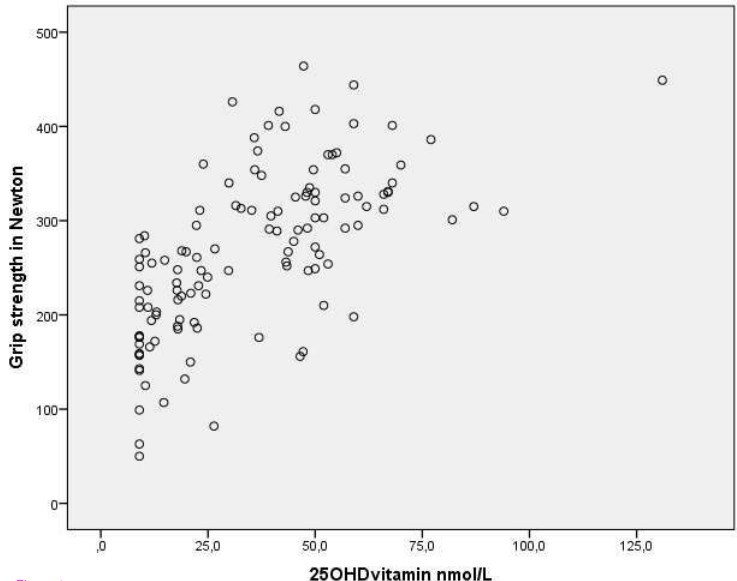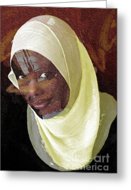Veiled Somali pregnant women in Sweden had low vitamin D and were weak
Physical performance and 25-hydroxyvitamin D: a cross-sectional study of pregnant Swedish and Somali immigrant women and new mothers.
BMC Pregnancy Childbirth. 2013 Dec 17;13(1):237.
Kalliokoski P, Bergqvist Y, Löfvander M.
BACKGROUND: Severe vitamin D deficiency can impair muscle strength. The study aims were to examine physical performance in the hands and upper legs, and analyze plasma 25-hydroxyvitamin D (25(OH)D) concentrations in women with presumably low (veiled, Somali-born) and high levels (unveiled, Swedish-born).
METHODS: Women (n=123, 58% Swedish) enrolled at a Swedish antenatal clinic, latitude 60 [degree sign] N, were recruited. Plasma 25(OH) D was analyzed, measured as nmol/L, then categorized as <10 = undetectable, 10-24, 25-49, 50-74 or >75. Muscle strength was tested: maximal hand grip strength (in Newtons, N), and upper leg performance (categorized as able/unable to perform squatting, standing on one leg, standing from a chair, and lifting their hips). Social and anthropometric data were collected. Non-parametric statistics tested the data for differences in their ability to perform the tests across 25(OH)D categories. Undetectable values (<10 nmol/L) were replaced with '9' in the linear correlation statistics. A final main effect model for grip strength (in N) was calculated using stepwise linear regression for independent variables: country of birth, 25(OH)D levels, age, height, weight, physical activity, lactation status, parity, and gestational age.
RESULTS:
Somali participants
(35%) had 25(OH)D levels of <10 nmol/L, and
90% had <25 nmol/L;
10% of Swedish participants had <25 nmol/L of 25(OH)D, and
54% had <50 nmol/L.
Somali women had a relatively weak grip strength compared with Swedish women: median
202 N (inter-quartile range 167-246) vs. median
316 N (inter-quartile range 278-359), respectively.
Somali women were also weak in upper leg performance:
73% were unable to squat,
29% unable to stand on one leg, and
21% could not lift their hips (not significant across 25(OH)D categories);
most Swedish women could perform these tests.
In the final model, grip strength (N) was significantly associated with 25(OH)D levels (B 0.94, p=0.013) together with Somali birth (B -63.9, p<0.001), age (B 2.5, p=0.02) and height (B 1.7, p=0.01)
CONCLUSIONS: Many Somali women had undetectable/severely low 25(OH)D concentrations and pronounced hand and upper leg weakness; grip strength was strongly associated with 25(OH)D. Maternity health care personnel should be aware of this increased frequency and manage care accordingly.
PMID: 24345271

The higher the vitamin D, the stronger the grip




PDF is attached at the bottom of this page
See also VitaminDWiki
Search VitaminDWiki for "Grip Strength" 57 items Dec 2013
Search VitaminDWiki for "muscle strength" 410 items Dec 2013
Vitamin D improves muscle strength if deficient – meta-analysis - Oct 2010
Higher vitamin D during pregnancy associated with stronger hand grip at age 4 – Oct 2013
Muscle strength not increased by raising vitamin D to only 30 ng – RCT Aug 2012
More than 40 ng vitamin D for Athletes – July 2010 nice tables
Hypothesis: Why so many females in the Middle East are now Vitamin D Deficient
More hijab clothing may have resulted in 6X increase in Multiple Sclerosis in Tehran – May 2013
Dark skinned pregnant women far from equator were very vitamin D deficient – Sept 2012
Concealing clothing resulted in only 8 ng vitamin D – Feb 2011 France
Concealing Clothing in Canada: half the level of vitamin D in blood – May 2012
The following is from Hypothesis: Why so many females in the Middle East are now Vitamin D Deficient
{include}
